- Home
- Robin Cook
Sphinx Page 2
Sphinx Read online
Page 2
“Of course,” said Maya. “Immediately.”
“Reopen it,” said Nenephta, turning back to Emeni.
“Reopen it?” queried a surprised Maya. Nebmare-nahkt dropped his date.
“Yes. I want to enter that pitiful tomb myself. The words of this stonecutter have provided me with an inspiration reminiscent of the great Imhotep. I now know how to guard the treasures of our Pharaoh Seti I for all eternity. I can’t believe I never thought of it before.”
For the first time Emeni felt a glimmer of hope. But Nenephta’s smile vanished as suddenly he turned back to the prisoner. His pupils narrowed and his face darkened like a summer storm.
“Your words have been helpful,” said Nenephta, “but they do not atone for your vile deeds. You will be tried, but I will be your accuser. You will die in the prescribed manner. You will be impaled alive in view of your peers, and your body will be left for the hyenas.”
Motioning his bearers to bring his chair, Nenephta turned to the other nobles. “You have served the pharaoh well today.”
“That is my fervent wish, your Excellency,” answered Maya. “But I do not understand.”
“It is not for you to understand. The inspiration I have had today shall be the most closely guarded secret in the universe. It will last for all eternity.”
November 26, 1922
TOMB OF TUTANKHAMEN VALLEY OF THE KINGS NECROPOLIS OF THEBES
The excitement was infectious. Even the Sahara sun knifing through the cloudless sky could not diminish the suspense. The fellahin quickened their pace as they brought basket after basket of limestone chips from the entrance to Tutankhamen’s tomb. They had reached a second door thirty feet down a corridor from the first. It too had been sealed for three thousand years. What lay beyond? Would the tomb be empty like all the others robbed in antiquity? No one knew.
Sarwat Raman, the beturbaned foreman, climbed the sixteen steps to ground level with a layer of dust clinging to his features like flour. Clutching his galabia, he strode across to the tent marquee, which provided the only bit of shade in the remorselessly sunny valley.
“Beg to inform your Excellency that the entrance corridor has been cleared of rubble,” said Raman, bowing slightly. “The second door is now fully exposed.”
Howard Carter looked up from his lemonade, squinting from under the black homburg he insisted on wearing despite the shimmering heat. “Very good, Raman. We will inspect the door as soon as the dust settles.”
“I will await your honorable instructions.” Raman turned and retreated.
“You are a cool one, Howard,” said Lord Carnarvon, christened George Edward Stanhope Molyneux Herbert. “How can you sit here and finish your lemonade without knowing what is behind that door?” Carnarvon smiled and winked at his daughter, Lady Evelyn Herbert. “Now I can understand why Belzoni employed a battering ram when he found Seti I’s tomb.”
“My methods are diametrically opposed to those of Belzoni,” said Carter defensively. “And Belzoni’s methods were appropriately rewarded with an empty tomb, save for the sarcophagus.” Carter’s gaze moved involuntarily toward the nearby opening of Seti I’s tomb. “Carnarvon, I’m not really certain what we’ve found here. I don’t think we should allow ourselves to get too excited. I’m not even sure it’s a tomb. The design is not typical for an eighteenth-dynasty pharaoh. It could be just a cache of Tutankhamen’s belongings brought from Akhetaten. Besides, tomb robbers have preceded us, not once but twice. My only hope is that it was robbed in antiquity and someone thought it important enough to reseal the doors. So I truly have no idea what we are going to find.”
Maintaining his English aplomb, Carter allowed his eyes to roam about the desolate Valley of the Kings. But his stomach was in knots. He had never been so excited in all of his forty-nine years. In the previous six barren seasons of excavation, he had found nothing. Two hundred thousand tons of gravel and sand had been moved and sifted, for absolutely nothing. Now the suddenness of the find after only five days of excavating was overwhelming. Swirling his lemonade, he tried not to think or hope. They waited. The whole world waited.
The larger dust particles settled in a fine layer on the sloping corridor floor. The group made an effort not to stir the air as they entered. Carter was first, followed by Carnarvon, then his daughter, and finally A. R. Callender, Carter’s assistant. Raman waited at the entrance after giving Carter a crowbar. Callender carried a large flashlight and candles.
“As I said, we are not the first to broach this tomb,” said Carter, nervously pointing to the upper-left-hand corner. “The door was entered and then resealed in that small area.” Then he traced a larger circular area in the middle. “And again in this much larger area here. It is very strange.” Lord Carnarvon bent over to look at the royal necropolis seal, a jackal with nine bound prisoners.
“Along the base of the door are examples of the original Tutankhamen seal,” continued Carter. The beam of the flashlight reflected the fine dust still suspended in the air, before illuminating the ancient seals in the plaster.
“Now, then,” said Carter as coolly as if he were suggesting afternoon tea, “let’s see what is behind this door.” But his stomach contorted into a tight mass, aggravating his ulcer, and his hands were damp, not so much from the heat as from the unexpressed tension. His body quivered as he lifted the crowbar and made a few preliminary cuts into the ancient plaster. The bits and pieces rained down about his feet. The exertion gave expression to his pent-up emotions, and each lunge was more vigorous than the last. Suddenly the crowbar broke through the plaster, causing Carter to stumble up against the door. Warm air issued from the tiny hole, and Carter fumbled with the matches, lighting a candle and holding a flame to the opening. It was a crude test for the presence of oxygen. The candle continued to burn.
No one dared to speak as Carter gave the candle to Callender and continued working with the crowbar. Carefully he enlarged the hole, making certain that the plaster and stone blocking fell into the corridor and not into the room beyond. Taking the candle again, Carter thrust it through the hole. It burned contentedly. He then put his head to the hole, his eyes straining in the darkness.
In a moment time stood still. As Carter’s eyes adjusted, three thousand years disappeared as in a minute. Out of the blackness emerged a golden head of Amnut, ivory teeth bared. Other gilded beasts loomed, the flickering candlelight throwing their exotic silhouettes on the wall.
“Can you see anything?” asked Carnarvon excitedly.
“Yes, wonderful things,” answered Carter finally, his voice for the first time betraying emotion. Then he replaced the candle with his flashlight, and those behind him could see the chamber filled with unbelievable objects. The golden heads were part of three funerary beds. Moving the light to the left, Carter gazed at a jumble of gilded and inlaid chariots heaped in the corner. Tracing back to the right, he began to ponder the curiously chaotic state of the room. Instead of the prescribed stately order, objects appeared to have been thrown about without thought. Immediately to the right were two life-size statues of Tutankhamen, each with a kilt of gold, wearing gold sandals, and armed with mace and staff.
Between the two statues was another sealed door.
Carter left the opening so the others could have a better look. Like Belzoni, he was tempted to crash down the wall and dive into the room. Instead, he calmly announced that the rest of the day would be devoted to photographing the sealed door. They would not attempt to enter what was obviously an antechamber until morning.
November 27, 1922
It took more than three hours for Carter to dismantle the ancient blocking of the door to the antechamber. Raman and a few other fellahin helped during this
stage. Callender had laid in temporary electric wires, so the tunnel was brightly lit. Lord Carnarvon and Lady Evelyn entered the corridor when the job was almost complete. The last baskets of plaster and stone were hauled away. The moment of entry had arrived. No one spoke. Outside, at the mouth of the tomb, hundreds of reporters from newspapers around the world tensely waited their first view.
For a brief second Carter hesitated. As a scientist he was interested in the minutest detail inside the tomb; as a human being he was embarrassed by his intrusion into the sacred realm of the dead; and as an explorer he was experiencing the exhilaration of discovery. But, British to the core, he merely straightened his bow tie and stepped over the threshold, keeping his eye on the objects below.
Without a sound he pointed at a beautiful lotiform cup of translucent alabaster on the threshold, so Carnarvon could avoid it. Carter then made his way over to the sealed door between the two life-size statues of Tutankhamen. Carefully he began to examine the seals. His heart sank as he realized that this door had also been opened by the ancient tomb robbers, and then resealed.
Carnarvon stepped into the antechamber, his mind reeling with the beauty of the objects so carelessly scattered around him. He turned to take his daughter’s hand as she prepared to enter, and in the process noticed a rolled papyrus leaning against the wall to the right of the alabaster cup. To the left was a garland of dead flowers, as if Tutankhamen’s funeral had been only yesterday, and beside it a blackened oil lamp. Lady Evelyn entered, holding her father’s hand, followed by Callender. Raman leaned into the antechamber but did not enter for lack of space.
“Unfortunately, the burial chamber has been entered and resealed,” said Carter, pointing toward the door in front of him. Carefully Carnarvon, Lady Evelyn, and Callender moved over to the archaeologist, their eyes following his finger. Raman stepped into the antechamber.
“Curiously, though,” continued Carter, “it has been entered only once, instead of twice, like the doors into the antechamber. So there is hope that the thieves did not reach the mummy.” Carter turned, seeing Raman for the first time. “Raman, I did not give you permission to enter the antechamber.”
“I beg your Excellency’s pardon. I thought that I could be of assistance.”
“Indeed. You can be of assistance by making sure no one enters this chamber without my personal approval.”
“Of course, your Excellency.” Raman silently slipped from the room.
“Howard,” said Carnarvon, “Raman is undoubtedly as enchanted as we with the find. Perhaps you could be a little more generous.”
“The workers will all be allowed to view this room, but I will designate the time,” said Carter. “Now, as I was saying, the reason I feel hopeful about the mummy is that I think the tomb robbers were surprised in the middle of their sacrilege. There is something mysterious about the way these priceless objects are haphazardly thrown about. It appears as if someone spent a little time rearranging things after the thieves, but not enough to put everything back in its original state. Why?”
Carnarvon shrugged.
“Look at that beautiful cup on the threshold,” continued Carter. “Why wasn’t that replaced? And that gilded shrine with its door ajar. Obviously a statue was stolen, but why wasn’t the door even closed?” Carter stepped back to the door. “And this ordinary oil lamp. Why was it left within the tomb? I tell you, we’d better record the positioning of each object in this room very carefully. These clues are trying to tell us something. It is very strange indeed.”
Sensing Carter’s tension, Carnarvon tried to look about the tomb through his friend’s trained eyes. Indeed, leaving an oil lamp within the tomb was surprising, and so was the disarray of the objects. But Carnarvon was so overwhelmed by the beauty of the pieces he could think of nothing else. Gazing at the translucent alabaster cup abandoned so casually on the threshold, he yearned to pick it up and hold it in his hands. It was so enticingly beautiful. Suddenly he noticed a subtle change in its orientation with regard to the garland of dried flowers and the oil lamp. He was about to say something when Carter’s excited voice rang out in the chamber.
“There’s another room. Everyone take a look.” Carter was squatting down, shining his flashlight beneath one of the funerary beds. Carnarvon, Lady Evelyn, and Callender hurried over to him. There, glittering in the circle of light from the torch, another chamber took form, filled with gold and jeweled treasure. As in the anteroom, the precious objects had been chaotically scattered, but for the moment the Egyptologists were too awed by their find to question what had happened three thousand years in the past.
Later, when they would be ready to explore the mystery, Carnarvon was already fatally ill with blood poisoning. At 2 A.M. on April 5, 1923, less than twenty weeks after the opening of Tutankhamen’s tomb and during an unexplainable five-minute power failure throughout Cairo, Lord Carnarvon died. His illness reputedly was started by the bite of an insect, but questions were raised.
Within months four other people associated with the opening of the tomb died under mysterious circumstances. One man disappeared from the deck of his own yacht lying at anchor in the placid Nile. Interest in the ancient robbery of the tomb waned and was replaced by a reassertion of the reputation of the ancient Egyptians in the occult sciences. The specter of the “Curse of the Pharaohs” rose from the shadows of the past. The New York Times was moved to write about the deaths: “It is a deep mystery, which it is all too easy to dismiss by skepticism.” A fear began to infiltrate the scientific community. There were just too many coincidences.
Day 1
CAIRO 3:00 P.M.
Erica Baron’s reaction was pure reflex. The muscles of her back and thighs contracted and she straightened up, twirling to face the molester. She had bent over to examine an engraved brass bowl when an open hand had thrust between her legs, grabbing at her through her cotton slacks. Although she had been the object of a number of lewd stares, and even obviously sexual comments since she had left the Hilton Hotel, she had not expected to be touched. It was a shock. It would have been a shock anywhere, but in Cairo, on her first day, it seemed that much worse.
Her attacker was about fifteen, with a jeering smile that exposed straight rows of yellow teeth. The offending hand was still extended.
Ignoring her canvas tote bag, Erica used her left hand to knock the boy’s arm to the side. Then, surprising herself even more than the boy, she clenched her right hand in a tight fist and punched the taunting face, throwing all her weight into the blow.
The effect was astonishing. The punch was like a good karate blow, hurling the surprised boy back against the rickety tables of the brass vendor’s shop. Table legs buckled, wares crashed into the cobblestone street. Another boy carrying coffee and water on a metal tray suspended by a tripod was caught in the avalanche, and he too fell, adding to the confusion.
Erica was horrified. Alone in the crowded Cairo bazaar she stood clasping her bag, unable to comprehend that she had actually hit someone. She began to shake, certain the crowds would turn on her, but uncontrollable laughter erupted around her. Even the shopkeeper, whose wares were still rolling in spirals in the street, was chuckling away, holding his sides. The boy pulled himself from the debris, and with his hand to his face, managed a smile.
“Maareish,” said the shopkeeper, which Erica later learned meant “it can’t be helped” or “it doesn’t matter.” Feigning anger, he waved his ball-peen hammer and chased the boy away. Then, after giving Erica a warm smile, he started retrieving his belongings.
Erica moved on, her heart still beating quickly from the experience, but realizing that she had a lot to learn about Cairo and about modern Egypt. She was trained as an Egyptologist, but unfortunately that meant knowledge of the ancient civilization of Egypt
, not the modern one. Her specialty of New Kingdom hieroglyphic writing afforded no preparation for the Cairo of 1980. Ever since her arrival twenty-four hours previously, her senses had been assaulted mercilessly. First it was the smell: a kind of cloying aroma of lamb that seemed to pervade every corner of the city. Then it was the noise; a constant sound of automobile horns mixed with discordant Arabic music blaring from innumerable portable radios. Finally it was the feel of dirt, dust, and sand, which covered the city like the patina of a medieval copper roof, accentuating the unremitting poverty.
The episode with the boy undermined Erica’s confidence. In her mind all the smiles of the men in their skullcaps and flowing galabias began to reflect prurient thoughts. It was worse than Rome. Boys not even in their teens followed her, giggling and asking her questions in a mixture of English, French, and Arabic. Cairo was alien, more alien than she had expected. Even the street signs were all written in the decorative but incomprehensible Arabic script. Looking back over her shoulder, up Shari el Muski toward the Nile, Erica thought about returning to the western area of the city. Perhaps the whole idea of coming to Egypt on her own was ridiculous. Richard Harvey, her lover for the last three years, even her mother, Janice, had said as much. She turned again, looking into the heart of the medieval city. The street narrowed, the press of people looked overwhelming.
“Baksheesh,” said a little girl no more than six years old. “Pencils for school.” The English was crisp and surprisingly clear.
Erica looked down at the child, whose hair was hidden by the same dust that covered the street. She wore a tattered orange print dress and no shoes. Erica bent to smile at her, and suddenly gasped. Clustered around the child’s eyelashes were numerous iridescent green house flies. The little girl made no attempt to shoo them away. She just stood there unblinking, holding out her hand. Erica was immobilized.

 Shock
Shock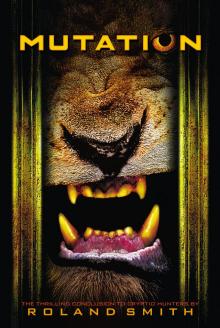 Mutation
Mutation Chromosome 6
Chromosome 6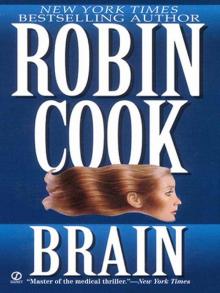 Brain
Brain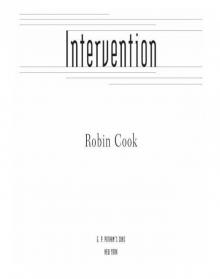 Intervention
Intervention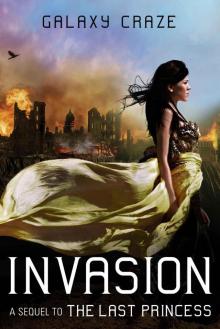 Invasion
Invasion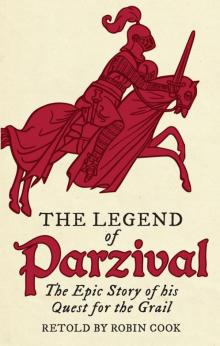 The Legend of Parzival: The Epic Story of His Quest for the Grail
The Legend of Parzival: The Epic Story of His Quest for the Grail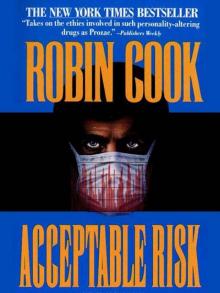 Acceptable Risk
Acceptable Risk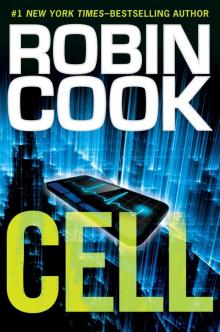 Cell
Cell Fever
Fever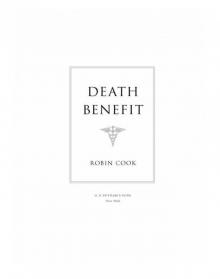 Death Benefit
Death Benefit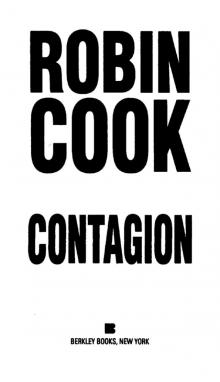 Contagion
Contagion Mindbend
Mindbend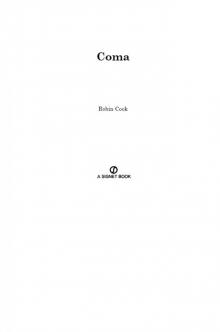 Coma
Coma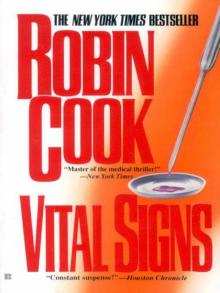 Vital Signs
Vital Signs Harmful Intent
Harmful Intent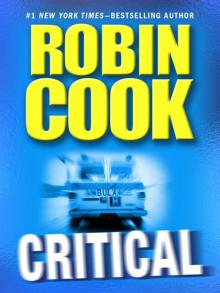 Critical
Critical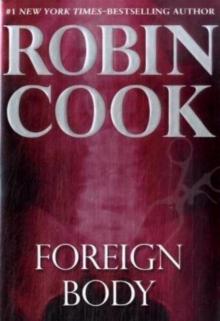 Foreign Body
Foreign Body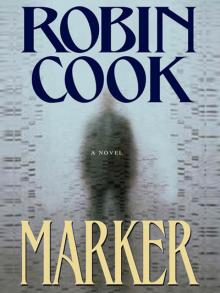 Marker
Marker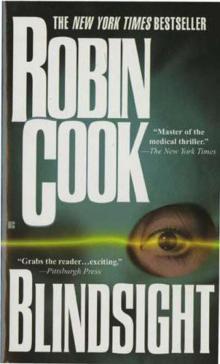 Blindsight
Blindsight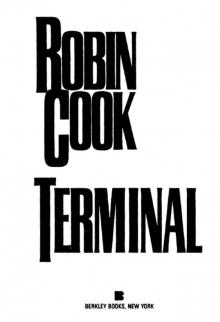 Terminal
Terminal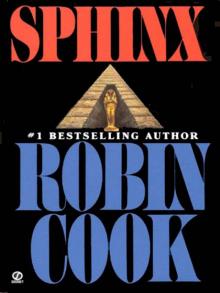 Sphinx
Sphinx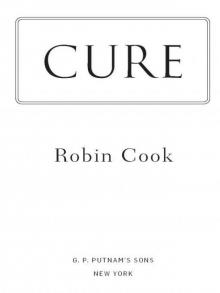 Fatal Cure
Fatal Cure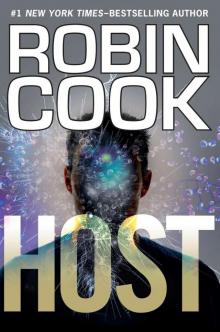 Host
Host Charlatans
Charlatans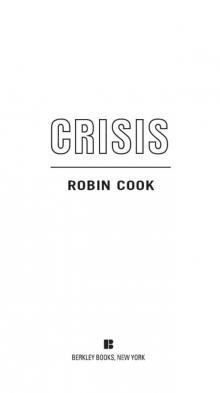 Crisis
Crisis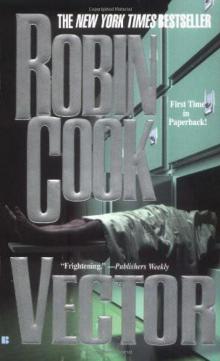 Vector
Vector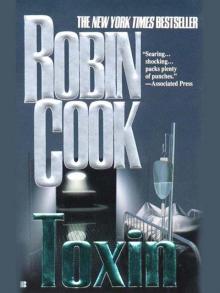 Toxin
Toxin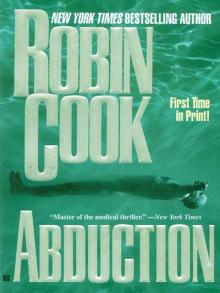 Abduction
Abduction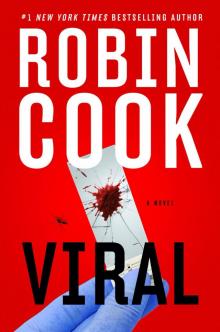 Viral
Viral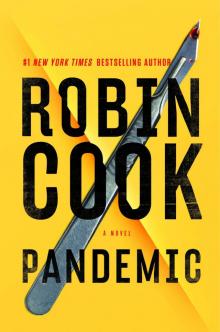 Pandemic
Pandemic Outbreak
Outbreak Vector js&lm-4
Vector js&lm-4 Godplayer
Godplayer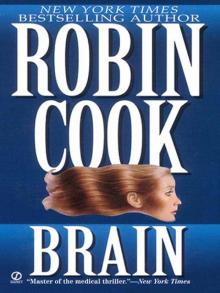 A Brain
A Brain Year of the Intern
Year of the Intern Outbreak dmb-1
Outbreak dmb-1 Cure
Cure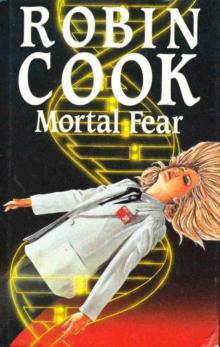 Mortal Fear
Mortal Fear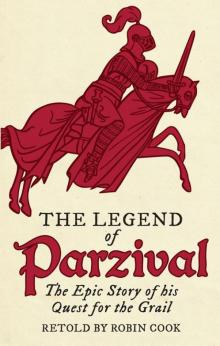 The Legend of Parzival
The Legend of Parzival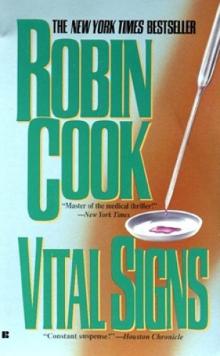 Vital Signs dmb-2
Vital Signs dmb-2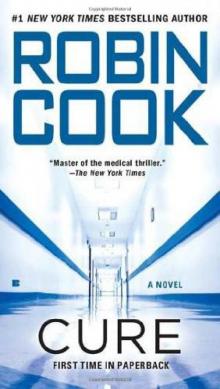 Cure (2010) sam-10
Cure (2010) sam-10 Blindsight sam-1
Blindsight sam-1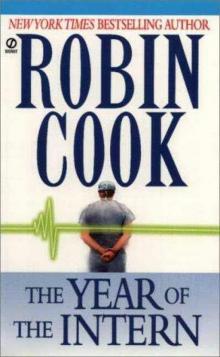 The Year of the Intern
The Year of the Intern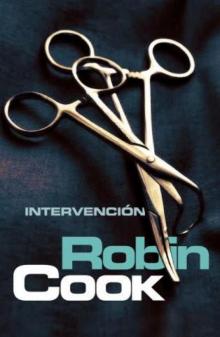 Intervention sam-9
Intervention sam-9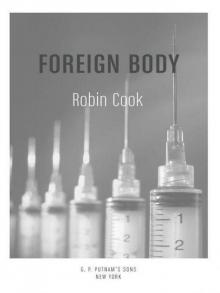 Foreign Body sam-8
Foreign Body sam-8